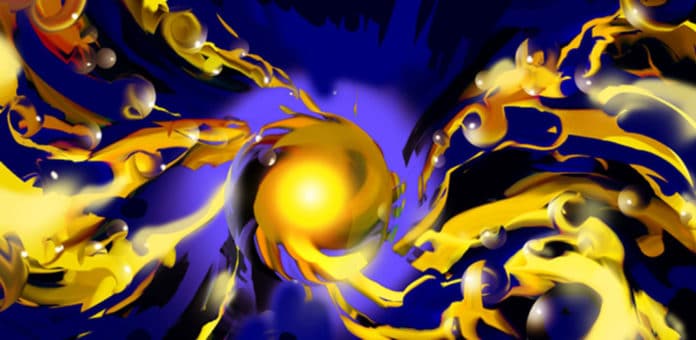Researchers have developed a Nanoscale engine which is the world’s tiniest engine. It has a size of a few billionth of a meter. Scientists named it as ANT: Actuating Nano-transducers. Like real ants, they create a large force of their weight. The research has been done by Scientists from the University of Cambridge. Scientists want to create Nano-machine that can conduct in water, predict atmosphere around itself, exchange information, acknowledge the request. They can even insert into a living cell to conflict with the disease. This new technique is amazingly easy, but extremely fast and takes lots of efforts.
Original invention was made up of small charged particles of gold. Then the particles were bound together with the temperature-reactive polymer in the form of a gel. After that Nano- engine gets heated by using the laser at a certain temperature of 32 degrees C. Scientists found, it’s collecting lots of electric energy within a second. This is similar to polymer coating throwing whole water out of gel and collapse. It is the affection of tightly forming gold nanoparticles together in the form of the bunch. But, when the cooling process of device starts, polymer starts taking water back to itself and the gold nanoparticles quickly starts splitting, like a spring.
Dr. Tao Ding from Cambridge’s Cavendish Laboratory, said, “It’s like an explosion. We have hundreds of gold balls flying apart in a millionth of a second when water molecules inflate the polymer around them.”
Study co-author, Dr. Ventsislav from University of Bath said, “We know that light can heat up water to power steam engines, but now we can use light to power a piston engine at the nanoscale.”
The large force used by tiny devices depends on Van Der Waals energy (attraction between atoms and molecules). The device has various orders of magnitude greater than previously produced devices. Along with a force per unit weight, this is hundred times better than any motor or muscle.
The whole process is led by Professor Jeremy Baumberg from the Cavendish Laboratory. He said, “The whole process is like a Nano-spring. The smart part here is we make use of Van Der Waals attraction of heavy metal particles to set the springs and water molecules to release them, which is very reversible and reproducible.”
Some key feature of ANT- Actuating Nano-transducers:
- Actuating Nano-transducers uses light to power itself.
- Actuating Nano-transducers are optically powered, provides unusual large force/mass.
- Actuating Nano-transducers are simple and extremely fast.
- The devices are biocompatible, cost-effective for maintenance, fast to acknowledge and energy-efficient.
